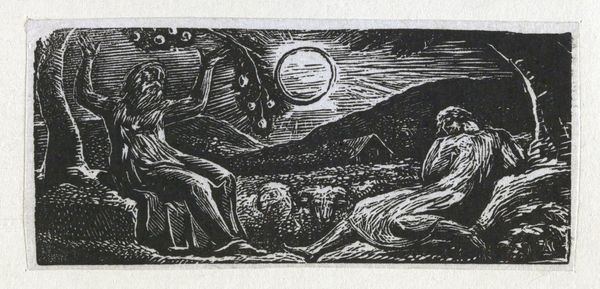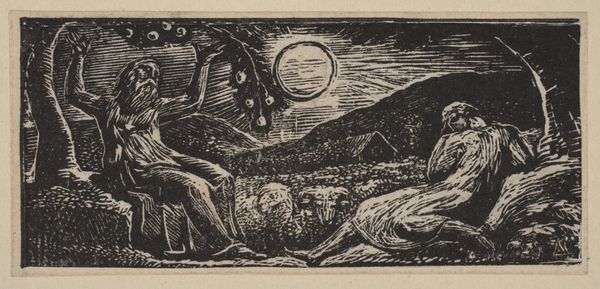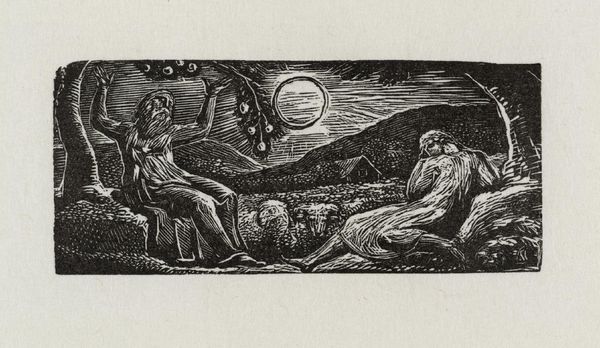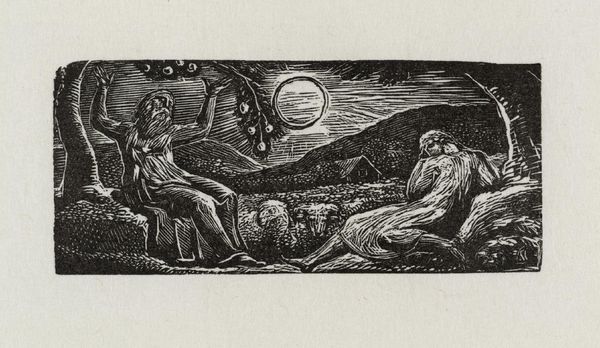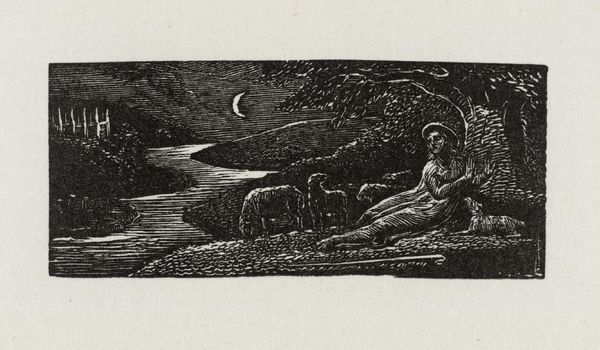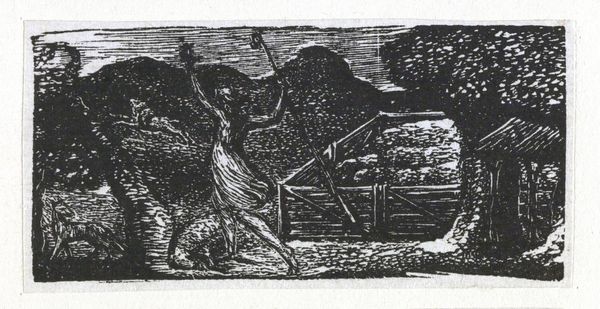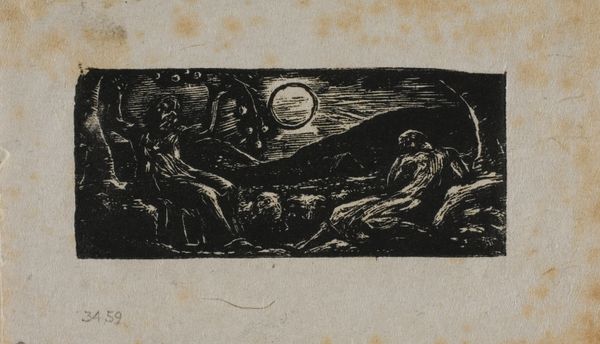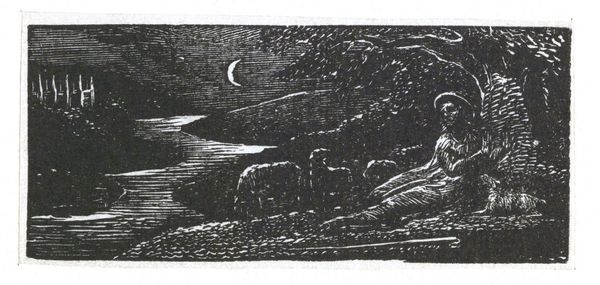
Dimensions: image: 33 x 75 mm
Copyright: CC-BY-NC-ND 4.0 DEED, Photo: Tate
Editor: This wood engraving, "Thenot and Colinet Converse Seated between Two Trees" by William Blake, shows a pastoral scene. The stark contrast and small scale give it a feeling of intense intimacy. What can you tell me about it? Curator: Considering Blake’s historical context, the image reflects a romanticized view of rural life, common during the late 18th and early 19th centuries. The idealized figures may speak to a yearning for simpler times amid industrialization. Editor: So, it's not just about the landscape, but also about what the landscape represented? Curator: Precisely. Blake often used pastoral imagery to critique the social and political issues of his time. This scene serves as a commentary on the relationship between humanity and nature. Editor: That adds a whole new layer to my understanding of the piece. Thanks! Curator: My pleasure. It’s fascinating how Blake uses seemingly simple scenes to express complex ideas about society and its values.
Comments
tate 8 months ago
⋮
http://www.tate.org.uk/art/artworks/blake-thenot-and-colinet-converse-seated-between-two-trees-a00113
Join the conversation
Join millions of artists and users on Artera today and experience the ultimate creative platform.
tate 8 months ago
⋮
Samuel Palmer was the most important of Blake’s followers, known as the Ancients. Palmer first met Blake in 1824. He described these illustrations to an imitation of the First Eclogue by the Roman poet Virgil as ‘visions of little dells, and nooks, and corners of Paradise’. Palmer’s art was particularly influenced by them. These prints appealed to the Ancients because they were the result of Blake’s experiments with a new medium; he had never engraved on wood before. Even at the age of sixty-four he wanted to make further explorations in his art. Gallery label, August 2004
